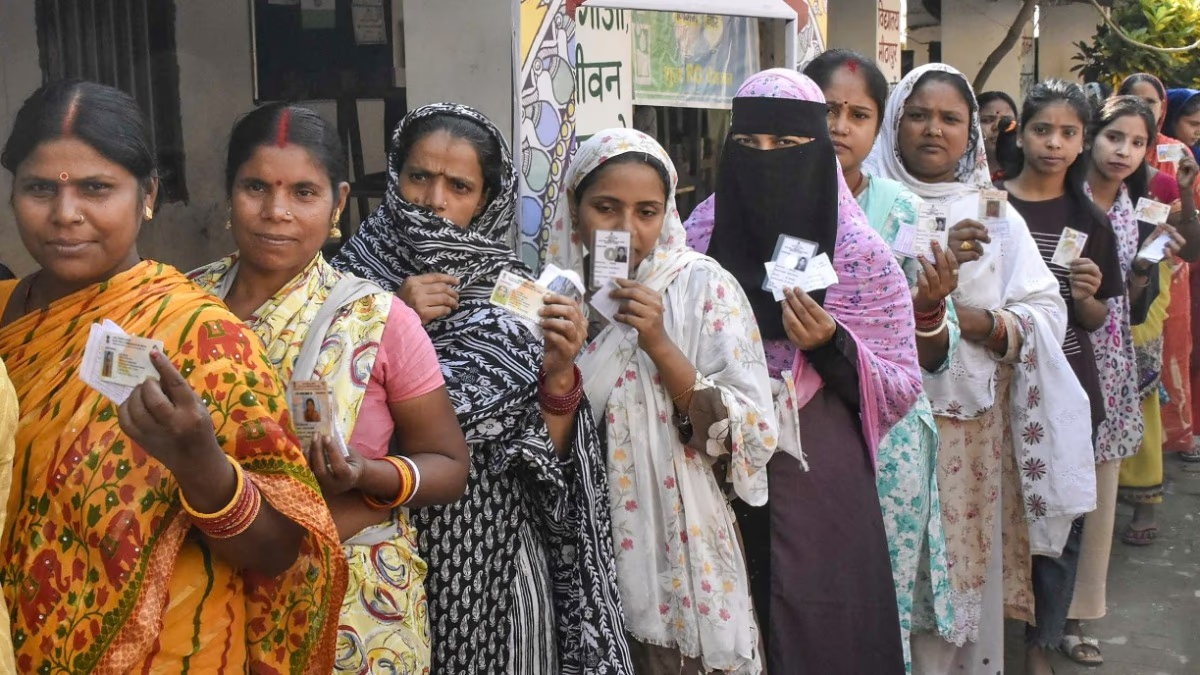The first phase of the 2025 Bihar Assembly elections saw an impressive 8% increase in voter turnout compared to 2020. This surge not only reflects the zeal of the populace but also signifies endorsements on democratic reforms.
Both the NDA and the Grand Alliance have professed the increased voting as favorable to their causes. However, election history is mixed; at times, significant governmental shifts have occurred despite low voter turnout and vice versa. Thus, sweeping predictions based purely on percentages might be misleading. Nevertheless, examining the reasons for the bumper voting merits serious discussion. What could be the political implications of increased voting in Bihar?
The unexpected 8% increase in voter turnout in Bihar has left many astonished. Questions arise: Is this the result of a political wave or the diligent efforts of the Election Commission, manifested through SIR's (Special Intense Revision) impact—fraudulent voters were excluded from voting.
Significant improvements have been made in Bihar’s voter lists over recent years. The Election Commission removed duplicate, deceased, or fake names via electronic verification, focusing on genuine voters. For instance, if a region previously had 1 million registered voters but now has 900,000, the same 600,000 voting translates to a 66% turnout instead of 60%. The elimination of fraudulent or inactive voters naturally boosts the percentage.
Under SIR, voters received timely information about their booth, polling center, and electoral process, boosting legitimate participation, particularly in rural areas through outreach by active volunteers and teachers at the panchayat level.
This time, digitalized booth-wise voter lists helped officials curb ghost voting. In many districts, facial recognition and QR-based voter slips were introduced for the first time, enhancing voting transparency and security. Thus, it's safe to say that the higher turnout is a result not just of political enthusiasm but also of election management improvements.
The long lines of women at polling stations during the Bihar elections were historic. It seems women voted for Nitish Kumar disregarding caste, community, and religion. In many instances, women voiced their intent to vote for Nitish despite opposition from husbands and sons. This isn’t just a symbol of women’s empowerment but also an indication of the growing influence of the ‘Nitish Factor’ in current elections.
Women have been a cornerstone of Nitish Kumar’s politics. Over the past decade and a half, he has implemented decisions directly improving women’s lives. Initiatives like the 'Chief Minister Bicycle Program', 'Dress Scheme', 'Kanya Utthan Yojana', 'Reservation-based Panchayat Representation', and 'Prohibition' have fostered deep trust among women, transcending caste and class lines.
The prohibition law especially provided a shield of social security for women, significantly reducing domestic violence, disputes, and alcohol-related issues. Though criticized economically and administratively, women's gratitude toward Nitish Kumar remains strong.
Additionally, new government initiatives like the 'Chief Minister's Women Honor Scheme' offering direct economic support further bolster emotional bonds with female voters. In rural areas, the sentiment that 'Nitish Ji listened to us and valued us' prevails.
The massive turnout also suggests that some castes and communities voted decisively to remove Nitish Kumar. The Muslim community, working in Delhi-NCR, took leaves to vote in Bihar. Muslim-dominated areas appear deserted, revealing a resolve to prevent a BJP government.
Simultaneously, RJD's core voter base—Yadavs, extremely backward, Mahadalit and some marginal backward castes—exhibit a visible eagerness to crown Tejashwi. They believe that while promises of development and employment may not be fulfilled, making Tejashwi chief minister is worth a shot. Nitish's long reign provided stability but now seems to turn into stagnation.
In some OBC and EBC communities, there’s a belief that Nitish's governance now favors larger groups, leaving local leaders with fewer opportunities. Meanwhile, part of the Mahadalit community feels benefits aren’t reaching effectively.
Opposition parties have aimed to unite these dissatisfactions. Tejashwi Yadav’s focus on employment and youth-led change has resonated emotionally with these groups.
Prashant Kishor’s Jan Suraj campaign and smaller regional parties (e.g., Bhim Army, VIP Party, Hindustani Awam Morcha) have led to triangular contests.
Higher turnout indicates the participation of silent voters—those not aligned with major parties. While not vocal on social media, this group influences real outcomes.
If parties like Jan Suraj capture 3-4% votes, it could decisively swing several seats, as electoral wins in Bihar often rely on a margin of 1,000 to 3,000 votes. Thus, an 8% increase hints at reintroduced electoral instability.
No obvious wave appears to favor any side in Bihar this time. Despite this, if there's substantial voting, it suggests neither voters have rallied solely against the current government nor have they significantly consolidated behind a new face. Clearly, there’s enthusiasm within both camps to defeat the other.
During the campaign’s final stages, both the Grand Alliance and the NDA have worked tirelessly to activate their core voter bases. Nitish highlighted his ‘work and experience’ while Tejashwi centered campaigns on jobs and youth futures, activating urban and rural voters, resulting in long queues at polling booths.
Low voter turnout often reflects apathy or discontent, but a high percentage with no clear advantage indicates a 'close contest'. This situation seems to be unfolding in Bihar.




